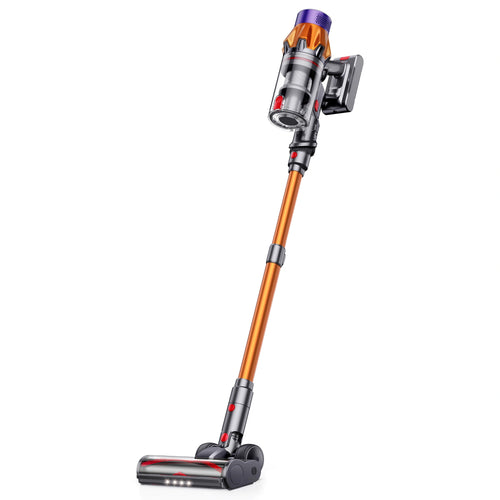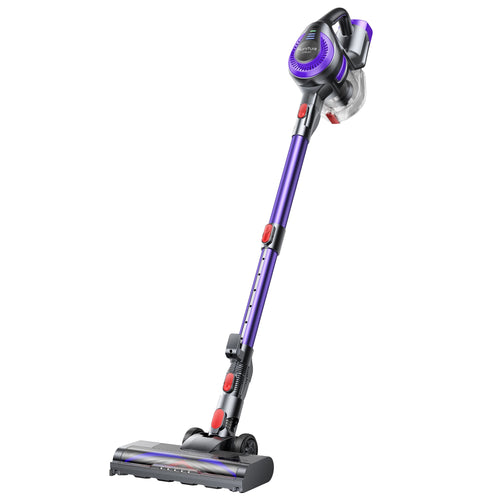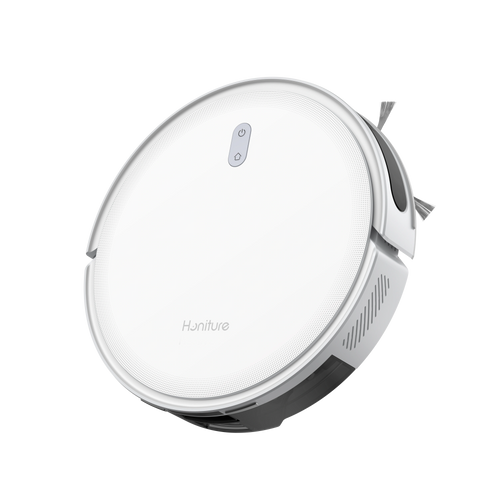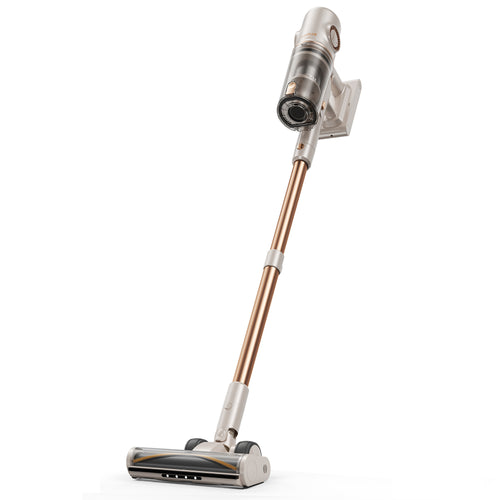Say goodbye to traditional cleaning, why choose a robot vaccum?
In the fast-paced world of modern life, more and more families are relying on smart devices to ease the burden of household chores. Robot vacuums, one of the most iconic cleaning devices in smart homes, are becoming a vital "cleaning partner" for more and more families.
Compared to traditional vacuum cleaners, they can automatically plan routes, intelligently avoid obstacles, and schedule cleanings, making cleaning from a tedious task easy and efficient.
If you're planning to buy a robot vacuum, this article will provide a comprehensive analysis of its features, purchasing specifications, models suitable for different home environments, and an outlook on future trends in robot vacuums.
This "Complete Robot Vacuum Buyer's Guide" will provide a comprehensive analysis. We'll not only break down those often confusing core features and specifications, but also tailor it to your budget and lifestyle, helping you choose the most professional, reliable, and cost-effective model

How does a vacuum cleaner work?
A robot vacuum is an intelligent cleaning device that integrates sensing, navigation, cleaning, and automatic charging. Its core operating principle is to use multiple sensors and algorithms to perceive the environment and plan cleaning paths, allowing it to complete vacuuming and mopping tasks without human intervention.
Perception system: the "eyes" that recognize the environmenth
LiDAR: Uses laser rangefinders to scan a room and create precise maps. Suitable for large apartments and complex layouts.
Vision Sensor (Camera): Uses a camera to identify floor features for visual navigation. Some high-end models incorporate AI algorithms to identify obstacles such as furniture, pets, and electrical wiring.
Infrared/Fall Prevention Sensor: Used to detect overhanging edges (such as stairs) to prevent fall damage.
Collision Sensor: Automatically adjusts direction upon sensing furniture or walls to avoid repeated collisions.

Navigation and path planning system: the "brain" of intelligent cleaning
The navigation system is the core intelligent part of the robot vaccum. Different navigation technologies determine the cleaning efficiency and coverage.
• Random navigation (Entry-level): The robot moves randomly, suitable for small spaces or single rooms.
• Gyroscope navigation (Mid-range): Uses accelerometers to optimize the robot's path, reducing repeated cleaning.
• LiDAR or vision navigation (High-end): Accurately builds a home map, supporting functions such as zoned cleaning and designated area cleaning.
High-end models are even equipped with AI algorithms and SLAM (Simultaneous Localization and Mapping) technology, which can update maps in real time and learn the user's home layout.

Cleaning system: the core power of vacuuming and mopping
The robot vaccum completes the floor cleaning task through the suction system, main brush, side brush and mop module.
• Main Brush: Cleans dust and hair from floors. The rubber main brush is suitable for homes with pets, while the roller brush is better suited for carpets.
• Side Brush: Cleans corners and walls.
• Suction System: Removes dust, hair, and debris. The main suction pressure range is between 2000–6000 Pa.
The robot vaccum uses sensors to identify the environment, a navigation system to plan routes, a cleaning module to complete dust removal and mopping, and intelligent control to achieve human-computer interaction.

Important indicators to pay attention to when buying a robot vaccum
In-depth analysis of cleaning performance: suction power (PA) and roller brush design
Pa (Pascal) is a unit of pressure. In vacuum robots, it is used to indicate the maximum static pressure at the suction port, that is, the suction strength.
Suction force (Pa): Is higher the better? The answer is: not entirely, but it is a key indicator. Suction force is a key measure of cleaning effectiveness, and we recommend choosing a model with a suction force of 2000Pa or above to meet daily household cleaning needs.
Why not completely?
This is a complex question. Even if the suction power is strong, if the brush design isn't optimal and can't effectively lift or gather dirt from the floor toward the suction port, the suction power will be significantly reduced.
Brush Roller Material and Design: The "Blade" of Cleaning
The brush roller is the key component that comes into direct contact with the floor. Its design directly determines the robot's effectiveness in cleaning hair, carpet, and crevices.
|
Material/Design |
Pros |
Cons |
Applicable Scenarios |
|
Traditional brush |
The price is low and it has a certain cleaning effect on fine dust with good adhesion to the ground. |
It is very easy to get hair tangled and needs frequent cleaning; it is not strong enough to clean carpets. |
Users with a very low budget. |
|
Rubber and wool (mainstream) |
Combining the beating effect of the rubber strip and the gathering effect of the brush, the cleaning power is more balanced. |
There is still a risk of hair entanglement, but it is relatively easy to clean. |
Mostly mixed ground level homes. |
|
Pure Glue Brush (New Trend) |
It has strong anti-hair entanglement ability and is effective in removing dust from carpets. |
The cost is relatively high, and its ability to collect fine dust on the ground is slightly inferior to that of a brush. |
Suitable for families with pets, people with long hair, and complex carpet environments. |
Suction force (Pa value) reflects "power", while the roller brush material reflects "efficiency". Only when the two work together can we truly achieve an efficient and comprehensive cleaning effect.
Suction + Roller Brush: Finding the "Golden Balance" of Cleaning Performance
Hard Floors → Medium Suction (2500–4000Pa) + Rubber Roller Brush;
Pet-Friendly Homes → High Suction (≥5000Pa) + Dual Rubber Roller Brushes;
Carpet-Heavy Floors → Strong Suction (≥6000Pa) + Brush Roller Brush;
Mixed Floors → Automatic Carpet Detection + Intelligent Suction Adjustment is the ideal solution.

Navigation and Path Positioning Technology
One of the most critical technologies for a robot vacuum's intelligence is its navigation and positioning system. It determines the robot's ability to identify the home environment, plan a reasonable route, avoid obstacles, and complete cleaning efficiently.
Currently, the two mainstream navigation systems are LiDAR (LiDAR) and VSLAM (Visual State Detection and Mapping) visual navigation systems, with D-ToF navigation being a future trend.
LiDAR (LiDAR): This system emits a laser beam from the top of the device and receives reflected light, creating a 2D map in real time. This creates high-precision maps and enables scientific route planning. For example, the Honiture G20 Pro features a 5.0 LiDAR navigation system.
Visual SLAM (Visual State-of-Land Mapping): This system uses a top-mounted camera to capture images of the environment and calculates its position using a SLAM algorithm for localization and mapping. The camera also identifies furniture and obstacles.
D-ToF (Directional Time of Flight) navigation: This system uses pulsed light time-of-flight ranging, which offers longer range and greater interference resistance than traditional LDS.

Robot Vacuum Obstacle Avoidance
Infrared/Ultrasonic Obstacle Avoidance: This system detects obstacles by sensing reflected signals. While low-cost, it's less sensitive to black or transparent objects.
3D Structured Light (ToF) Obstacle Avoidance: This system utilizes infrared ranging technology to accurately identify small obstacles such as wires, shoes, and pet bowls. This feature is commonly found in mid-range and high-end models.
AI Vision Obstacle Avoidance: This system uses cameras and image recognition algorithms to determine object type, enabling intelligent avoidance of pets, toys, and feces. This is the most advanced obstacle avoidance solution currently available.
Overall, infrared obstacle avoidance is suitable for users with limited budgets; 3D structured light combines precision and stability; and AI visual obstacle avoidance represents the intelligent direction of high-end robot vaccums.
Battery and Battery Life: Energy Guarantee Center
Mainstream robot vacuums have a battery life of 90–180 minutes and can cover a home area of 80–200 square meters. Models with an automatic recharge function automatically return to recharge when the battery is low.
Entry-level models (approximately 2600–3200 mAh): have a battery life of approximately 60–90 minutes, suitable for small apartments or single-floor cleaning.
Mid-range models (approximately 4000–4800 mAh): have a battery life of approximately 120 minutes, suitable for cleaning spaces of 80–120 square meters.
High-end models (≥5200 mAh): have a battery life of up to 150–200 minutes, suitable for larger apartments or multi-room environments.
Most robot vacuums have an automatic recharge function. When the battery is low, they will automatically return to the charging station to recharge and continue cleaning when fully charged (this is called "resume cleaning"). Therefore, when purchasing a robot vacuum, you should not only consider the battery capacity but also whether the battery life mode can be intelligently connected.

Automatic Dust Collection System: Say Goodbye to Frequent Dust Removal
The automatic dust collection system primarily addresses the user pain point of frequent dust bin cleaning. After the robot completes cleaning and returns to the base station, the base station automatically extracts the dust from the robot's dust bin using powerful negative pressure suction.
Currently, most mainstream models are equipped with an automatic dust collection base station. After cleaning, the robot automatically returns to the base station, where powerful suction draws dust from the dust bin into the dust bag. High-end models feature dust bags with a capacity of 2–3 liters, allowing for 30–60 days of continuous use without manual emptying.
Choose the right model according to different living environments
The most important thing when choosing a robot vacuum is to match it to your living needs and home environment. Here are the purchasing strategies for four typical environments:
Small Apartments/Single-Person Apartments: Focus on cost-effectiveness and basic features
For smaller apartments or single-person rentals, a lightweight robot vacuum is recommended. LDS laser navigation provides fast speed and high accuracy, making it ideal for efficient cleaning of small areas. A battery capacity of around 3200 mAh is sufficient, eliminating the need for top-tier, long-lasting battery life. A suction force of around 500 Pa is sufficient for cleaning hard surfaces.
Pet-Friendly: Strong Suction + Anti-Tangle Brush
For those with cats, dogs, and other pets, we recommend choosing a pure rubber brush or a dual-brush system with excellent hair tangle prevention to prevent hair from getting stuck. Choose a model with strong suction (≥4000Pa) and an anti-tangle brush design to effectively remove hair and debris.
Large flats/duplexes: Emphasize multi-map management, long battery life, and powerful cleaning performance.
Must support multi-layer map storage and automatic recognition (typically capable of storing at least 3-5 maps); a battery capacity of 5000 mAh or higher, with precise resume function to ensure uninterrupted cleaning; strong suction power of 4000 Pa or higher, and efficient D-ToF or LDS navigation to ensure optimal route planning.

Selection of robot vaccum according to different cleaning scenarios
The power of robot vacuums lies in their ability to not only tackle everyday dust and debris but also provide targeted cleaning tailored to specific cleaning scenarios. Choosing the right model ensures efficient and thorough cleaning. The following are recommended models for common household cleaning scenarios:
Hard floors (ceramic tiles, wooden floors): We recommend models with flexible or rubber roller brushes. These brush heads effectively remove dust and hair while protecting the floor from scratches.
Carpeted areas: Carpets are particularly prone to accumulating dust, hair, and fine particles. We recommend choosing a robot vacuum that automatically detects carpets and enhances suction power.
Pet areas: Households with frequent pet shedding should prioritize suction and anti-tangling features. We recommend models with strong suction (over 4000Pa) and dual-sided brushes and a central anti-tangling roller brush.
Bedrooms and living rooms: We recommend choosing a robot vacuum with LDS laser navigation or vision guidance systems. These systems intelligently plan routes, avoid obstacles, and achieve high coverage. Furthermore, a silent mode ensures that cleaning tasks are completed without disturbing your pet's rest.

Recommended brands of robot vaccum worth buying on the market
There are numerous brands in the current robot vacuum market, ranging from high-end flagships to cost-effective models. Below are some recommended brands you can trust, covering both high-end and cost-effective options, to help users with different budgets choose from.
Recommended high-end robot vaccum brands
Roborock
Renowned for its high-precision LDS navigation and versatile base station system, the flagship Roborock S8 Pro Ultra features sonic mopping, automatic dust collection, self-cleaning, and drying functions, delivering truly "fully automatic cleaning."
iRobot
A pioneer in robotic vacuums from the United States, it's renowned for its reliability and optimized algorithms. Its flagship model, the Roomba j9+, features intelligent obstacle avoidance and powerful suction, making it ideal for homes with pets and carpets.
Dreame
A high-end brand within the Xiaomi ecosystem. The flagship Dreame L20 Ultra features AI-powered obstacle avoidance, automatic mop cleaning, and automatic water drainage, making it a benchmark among all-around base station models.
Cost-effective brand recommendation
Honiture
The Honiture G20 Pro/V8 Pro boasts high suction power, automatic dust collection, and practical features for a cost-effective solution. Its flagship models, the Honiture G20 Pro/V8 Pro, boast over 4000Pa of suction power, an automatic dust collection station, and intelligent path planning, offering outstanding performance in their price range. They're ideal for home users seeking a balance between cleaning performance and affordability.
Ecovacs
A long-established manufacturer in the industry, its products cover a wide range of price points. The DEEBOT T30 Omni, equipped with automatic dust collection and a self-cleaning system, boasts high cleaning efficiency and ease of use, making it one of the most popular models in the mass market.
Yeedi
Known for its simplicity, practicality, and high cost-effectiveness, the Yeedi Cube integrates automatic dust collection, mop cleaning, and drying functions, performing well in the mid-range market and is ideal for budget-conscious users seeking a smart experience.
Eufy (Anker Innovations)
Anker's smart home brand. Its flagship model, the Eufy X10 Pro Omni, features a lightweight, intelligent, and quiet cleaning experience, making it ideal for small and medium-sized homes.
Conclusion: Smart Cleaning Starts with Understanding
Robot vacuums are becoming an indispensable cleaning assistant in modern households. From their initial simple vacuuming capabilities to today's automatic dust collection, intelligent navigation, AI-powered obstacle avoidance, and versatile base stations, the level of intelligence in these products has significantly increased.
Choosing the right robot vacuum is crucial based on your living environment, cleaning needs, and budget:
- Smaller apartments prioritize lightweight design and cost-effectiveness;
- Families with pets require strong suction and a tangle-resistant brush;
- Families with elderly or infants prefer a quiet, intelligent model;
- For those seeking ultimate convenience, opt for an all-rounder with automatic cleaning, drying, and dust collection.
In the future, with the advancement of AI algorithms, image recognition and automatic maintenance technologies, robot vaccums will be upgraded from "smart cleaning tools" to "home cleaning butlers", truly achieving unmanned intervention and whole-house cleaning.
Robot Vacuums FAQ
Is a higher suction power robot vacuum cleaner better?
Not entirely. While higher suction power (a higher Pa value) does improve cleaning performance, it also increases noise and power consumption. For most households, a model with 3000–4000 Pa is sufficient, unless your home has a lot of carpet or pet hair.
Do robot vacuums require regular maintenance?
Yes. Although it's "intelligent cleaning," the filter, brush, and sensor still need to be cleaned regularly to maintain suction power and navigation accuracy. We recommend checking it every 2–4 weeks and replacing accessories (such as the side brush and HEPA filter) based on frequency of use.
I have a limited budget. Which feature should I prioritize?
If your budget is limited, you should prioritize navigation over expensive self-cleaning features.
Choose a model equipped with LDS laser navigation. LDS ensures the machine is efficient, doesn't get lost, and doesn't miss a sweep—it's the core of the basic experience. You can sacrifice automatic mop washing or automatic dust collection to stay within your budget, but you can't sacrifice navigation accuracy.
Which should I choose between LDS laser navigation and AI visual obstacle avoidance?
The two are complementary. LDS navigation ensures the robot doesn't get lost and completes cleaning efficiently. If your budget allows, a combined system of "LDS/D-ToF navigation + AI visual recognition" provides the smoothest, most minimally invasive cleaning experience. If your budget is limited, LDS navigation is preferred.
Which brand of robot vaccum is more worth buying?
Roborock, Dreame, and iRobot are recommended for high-end users;
Honiture, Ecovacs, Yeedi, and Eufy are recommended for those seeking value.
The Honiture V8 Pro/G20 Pro series offer outstanding suction power, automatic dust collection, and a balanced price, making them an ideal choice for those seeking high performance on a budget.
































